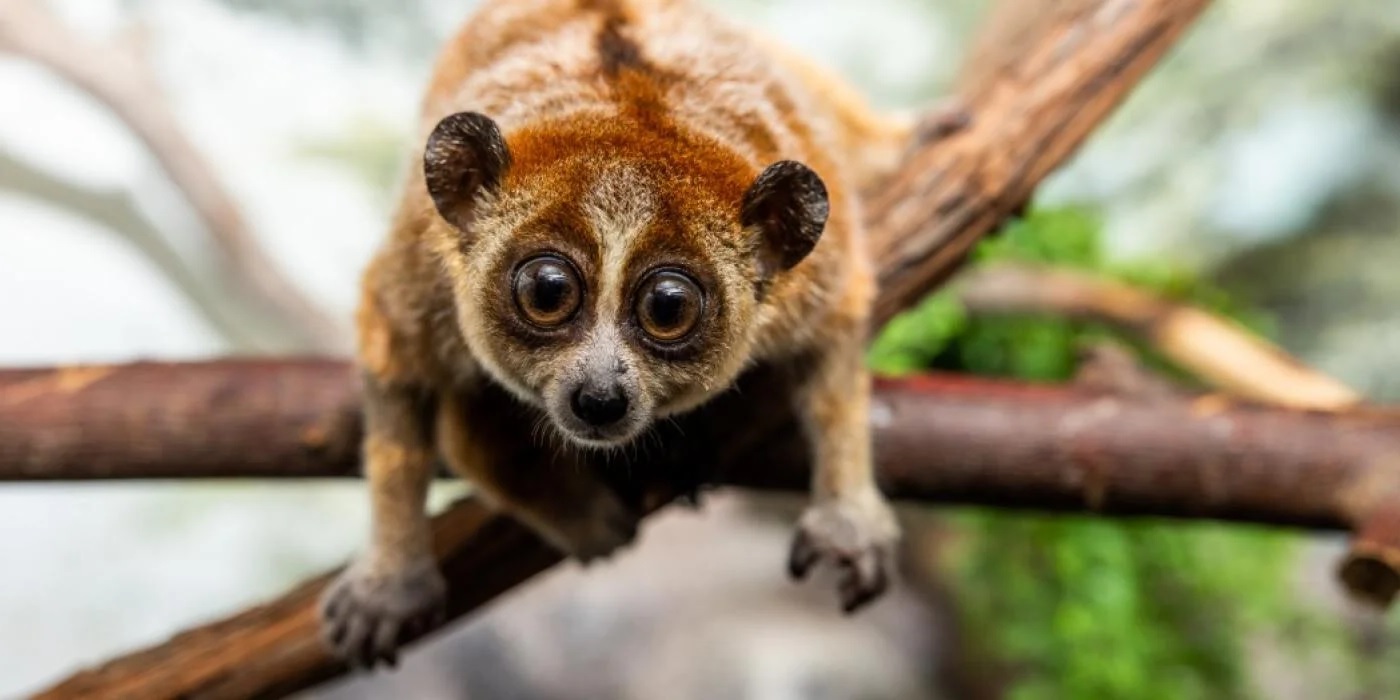
Did you know that the slow loris is one of the few venomous mammals on Earth? These adorable, wide-eyed creatures might look like they belong in a Disney movie, but they have some surprising traits. Found in Southeast Asia, slow lorises are nocturnal primates known for their slow, deliberate movements. Their venom, produced from glands on their elbows, can cause severe allergic reactions in humans. Despite their cuteness, these animals face threats from habitat loss and illegal pet trade. Learning about these fascinating creatures can help raise awareness and protect them. Ready to dive into more amazing slow loris facts? Let's get started!
What is a Slow Loris?
The slow loris is a small, nocturnal primate found in Southeast Asia. Known for its big eyes and slow movements, this creature has fascinated scientists and animal lovers alike. Let's dive into some amazing facts about this unique animal.
Slow Loris Physical Characteristics
These primates have some distinctive features that set them apart from other animals.
- Big Eyes: Slow lorises have large, round eyes that help them see in the dark. Their eyes are adapted for night vision, making them excellent nocturnal hunters.
- Toxic Bite: Unlike most primates, slow lorises have a toxic bite. They produce a toxin from glands on their elbows, which they lick to mix with their saliva.
- Slow Movements: True to their name, slow lorises move very slowly. This helps them avoid detection by predators.
- Strong Grip: Their hands and feet have a strong grip, allowing them to hold onto branches for long periods without getting tired.
Slow Loris Habitat and Distribution
Understanding where these creatures live can give us more insight into their behavior and lifestyle.
- Southeast Asia: Slow lorises are native to Southeast Asia, including countries like Indonesia, Malaysia, and Thailand.
- Rainforests: They primarily live in rainforests, where they can find plenty of food and shelter.
- Tree Dwellers: These animals are arboreal, meaning they spend most of their lives in trees.
- Territorial Creatures: Slow lorises are territorial and mark their territory with urine to keep other lorises away.
Slow Loris Diet and Feeding Habits
What do slow lorises eat? Their diet is as unique as they are.
- Omnivorous Diet: Slow lorises are omnivores, eating a mix of fruits, insects, and small animals.
- Gum and Nectar: They have a particular fondness for tree gum and nectar, which they extract using their specialized teeth.
- Slow Eaters: Just like their movements, slow lorises eat slowly, taking their time to savor their food.
Slow Loris Behavior and Social Structure
Their behavior is fascinating and offers a glimpse into their complex social lives.
- Nocturnal Lifestyle: Slow lorises are nocturnal, meaning they are active at night and sleep during the day.
- Solitary Animals: These primates are generally solitary, coming together only for mating.
- Communication: They communicate through vocalizations, scent markings, and body language.
Slow Loris Reproduction and Lifespan
Reproduction and lifespan are crucial aspects of any species' biology.
- Long Gestation: Slow lorises have a long gestation period of about six months.
- Single Offspring: Typically, a female slow loris gives birth to a single offspring at a time.
- Long Lifespan: In the wild, slow lorises can live up to 20 years, although their lifespan is often shorter due to habitat loss and other threats.
Conservation Status of Slow Loris
These unique creatures face several threats that have put them at risk.
- Endangered Species: Slow lorises are listed as endangered due to habitat destruction, illegal pet trade, and hunting for traditional medicine.
These fascinating facts highlight the unique characteristics and challenges faced by the slow loris.
The Slow Loris: Nature's Enigma
The slow loris is a fascinating creature that continues to captivate scientists and animal lovers alike. With its big eyes and slow movements, it’s easy to see why people find it so intriguing. But there’s more to this little primate than meets the eye. Its venomous bite is unique among primates, making it both adorable and dangerous. The slow loris also plays a crucial role in its ecosystem, helping to control insect populations and pollinate plants.
However, the slow loris faces significant threats from habitat loss and the illegal pet trade. Conservation efforts are essential to ensure this unique animal continues to thrive in the wild. By learning more about the slow loris and supporting conservation initiatives, we can help protect this remarkable species for future generations. So next time you see a slow loris, remember there’s a lot more to this tiny primate than just a cute face.
Was this page helpful?
Our commitment to delivering trustworthy and engaging content is at the heart of what we do. Each fact on our site is contributed by real users like you, bringing a wealth of diverse insights and information. To ensure the highest standards of accuracy and reliability, our dedicated editors meticulously review each submission. This process guarantees that the facts we share are not only fascinating but also credible. Trust in our commitment to quality and authenticity as you explore and learn with us.


